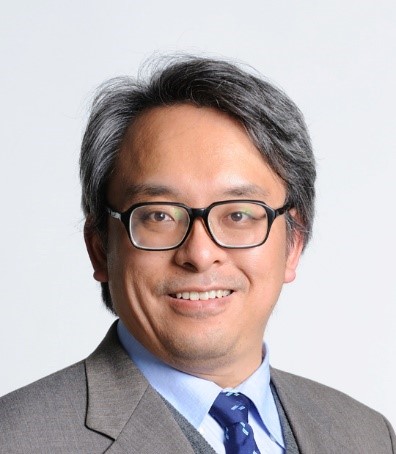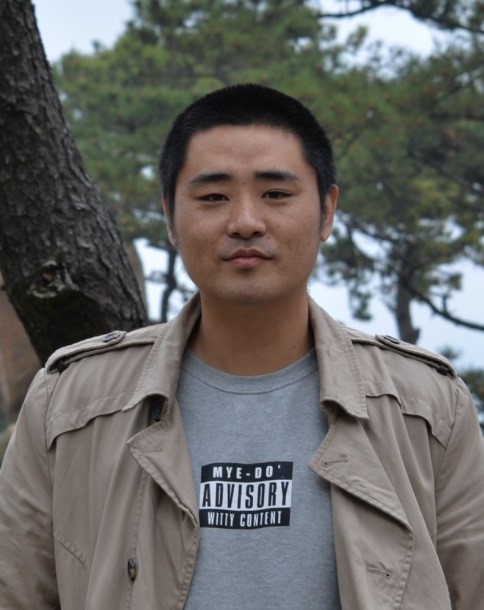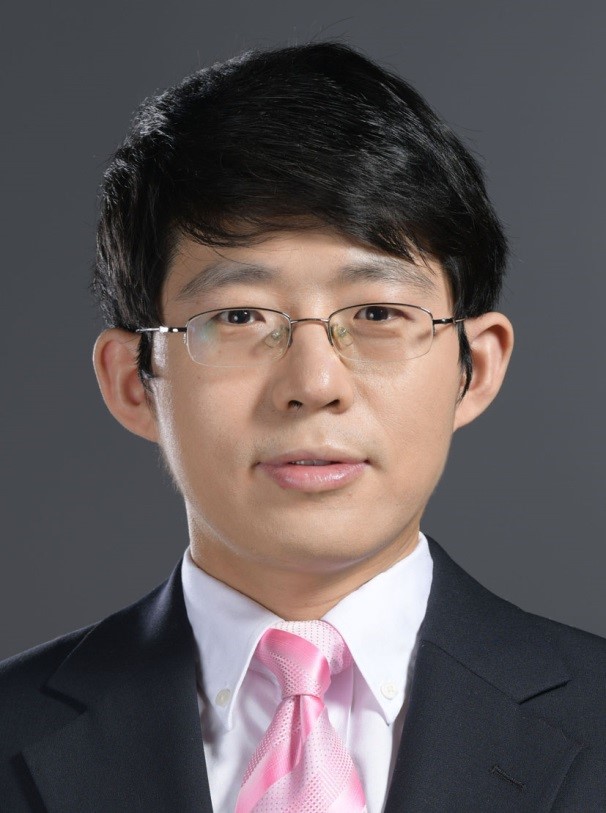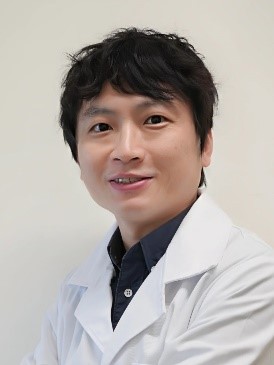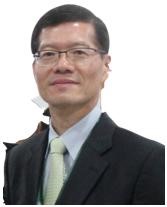
Nanomaterials Asia-Pacific Academic Forum
20 December 2020
Interface Science, Nanoarchitectonics, Nanomaterials, Supramolecular Chemistry
Forum Information

Dear Colleagues,
I would like to invite you to the Nanomaterials Asia-Pacific Academic Forum 2020. It is the first of a planned series dealing with different focus topics of interest to the broad readership of our journal. This forum intends to briefly highlight exciting topics in a comprehensive but efficient manner, the event will last for ONE Day, which includes time for the discussion of presentations.
This event will feature 6 invited experts from different regions of the Asia-Pacific who have not only significantly contributed to our journal Nanomaterials, but are also recognized for their great achievements in research fields related to the study of nanomaterials.
We will record the lectures, with the agreement of the lecturers, and deposit them in our online database. We will continue to build this database with brief introductions and summaries of topics across this fascinating field of nanomaterials. We hope that this event is of interest to you, and we welcome you to join us at this forum.
We look forward to seeing you at Nanomaterials Asia-Pacific Academic Forum 2020. Please find below an outline of the 6 presenters representing the broad range of nanomaterials.
Date: 20 December 2020
Webinar Secretariat: naaf2020@mdpi.com
The following experts will present and speak:
|
Prof. Dr. Katsuhiko Ariga |
Ariga is the Principal Investigator of World Premier International (WPI) Research Center for Materials Nanoarchitectonics (MANA) at the National Institute for Materials Science (NIMS). He received his Ph.D. Degrees from the Tokyo Institute of Technology. His research field is based on supermolecular chemistry and surface science, including the boundary research areas of organic chemistry, physical chemistry, biochemistry, and materials chemistry. He also appointed as a professor of Univ. Tokyo since 2017. His H-index is 106 (Web of Science, November, 2020) and he has been selected as a highly cited researcher in chemistry. Editorial activities: Editor-in-Chief of Bulletin of Chemical Society of Japan; International Advisory Board of Angewandte Chemie International Edition, Chemistry An Asian Journal, ChemNanoMat; Editorial Board Member of Advanced Materials, Chemistry of Materials, Langmuir (- 2014), ACS Applied Materials & Interfaces, Appl. Mater. Today, Small Methods, etc. He is a Fellow of Royal Society of Chemistry, a Member of World Economic Forum Expert Network and Honorary Member of Materials Research Society of India. |
|
Prof. Dr. Bin Wang |
Bin Wang is a professor at National Center for Nanoscience and Technology (NCNST), an institute in Chinese Academy of Sciences, Beijing, China. He received his Ph. D. at NCNST in 2014 and then moved to Prof. Rodney S. Ruoff’s group at the Center for Multidimensional Carbon Materials in Korea and Prof. Liming Dai’s group in the University of New South Wales in Australia as a research fellow until 2019. His research interests include low-dimensional materials synthesis and the related mechanical and electrochemical studies.
|
|
Prof. Dr. Xiaoyan Li |
Xiaoyan Li received his Ph.D. degree from Brown University in 2012. He is currently a tenured Associate Professor in Department of Engineering Mechanics, Tsinghua University. So far, he has published 62 papers in the refereed journals, including Nature, Nature Mater., Nature Nanotech., Nature Comm., Nano Lett., PNAS, Advanced Mater., PRL, Nano Energy, Science Advances etc., and 3 book chapters. He served as the editorial board members of Communications Materials, Nanomaterials, Materials, and Science China-Technological Science and Acta Mechanica Sinica. He has organized six symposia for international conferences and has served as the proposal reviewer for several funding agencies (including National Natural Science Foundation of China, Natural Sciences, Engineering Research Council of Canada, German Research Foundation and Estonian Research Council), and the technical reviewer for more than 50 peer reviewed journals. He received the Extreme Mechanics Letters Young Investigator Award in 2018 and the Eshelby Mechanics Award for Young Faculty in 2018. |
|
Prof.Dr. Zong-Hong Lin |
Zong-Hong Lin received his PhD degree in Chemistry from the National Taiwan University in 2009 and continued with his postdoctoral research at the National Taiwan University and the Georgia Institute of Technology during the years of 2010-2014. Subsequently, Dr. Lin joined the Institute of Biomedical Engineering, National Tsing Hua University (NTHU) as Assistant Professor in August 2014 and was successfully promoted to Associate Professor with Tenure effective from August 2017. Dr. Lin’s research interests center on the development of self-powered nanosensors and systems for healthcare applications. He is a productive researcher with more than 90 SCI papers (sum of the times cited: 8865, h-index: 48), as well as a multi-award winner for his acclaimed research contributions, including Young Scholar Fellowship of Taiwan Ministry of Science and Technology (2020), IEEE-NANOMED New Innovator Award (2019), Distinguished Young Investigator Research Grant of Taiwan Ministry of Science and Technology (2019), Young Investigator Award of the National Tsing Hua University (2018), Yong Investigator Award of the Association of Chemical Sensors in Taiwan (2016) and Yong Investigator Award of the Asian Biomaterials Congress (2015). Meanwhile, Dr. Lin is devoted to turning his scientific research into industry viable solutions – with more than 20 patents and developed technologies of great commercial potential across varied healthcare market segments.
|
|
Prof. Dr. Won-Chun Oh |
Won-Chun Oh is full Professor in the Department of Advanced materials and engineering at Hanseo University in Korea and School of Materials Science and Engineering at Anhui University of Science and Technology in China. And, he is guest professor in some of Universities in China, Thailand and Indonesia. He obtained the ‘Research Front’ award from Korean Carbon Society, and obtained the ‘Yangsong’ award from Korea Ceramic Society, the “Excellent Paper Award” from Korea Journal of Material Research, and the Best Paper Award” from Journal of Industrial and Engineering Chemistry for his pioneering work, and “Award of appreciation” from ICMMA2011, ICMMA2014 and ICMMA2019. He is an ICMMA committee board member and, is appointed as one of the “Conference Chairman and Vice Chairman” from 2007 to present year. He was appointed as one of the “Top 100 Scientist in the World” at IBC, UK and “Top 2% Scientists in the World” at Stanford University, USA. He is the author or a coauthor of 791 papers published in domestic and international journals and speeched on conference as Special lecture, Plenary lecture and Keynote lecture speaker. He serves as the Editor-in-Chief of the Journal of Multifunctional Materials and Photoscience, Asian Journal of Materials Chemistry and the Advisory Board Member of the Asian Journal of Chemistry. |
 Prof. Dr. Horacio Cabral |
Horacio Cabral is an Associate Professor in the Department of Bioengineering, Graduate School of Engineering, The University of Tokyo. He received his Ph.D. in Materials Engineering from The University of Tokyo in 2007 under the supervision of Prof. Kazunori Kataoka. Dr. Cabral was an Assistant Professor at the Center for Disease Biology and Integrative Medicine, Graduate School of Medicine, The University of Tokyo, until 2010, when he joined the Department of Bioengineering of The University of Tokyo as a Lecturer. In 2014, he was promoted to his current position.Dr. Cabral’s major research interests relate to the development of nanomedicines for diagnosis and therapy, particularly systems directed to intractable cancers. He has made major influential achievements in the development of translatable polymeric nanocarriers Particularly, his polymeric micelles targeting anticancer drugs to tumors have proceeded into human clinical studies, improving patients’ survival and reducing side effects. Moreover, he has accomplished seminal contributions in the understanding of the effect of nanocarrier design on activity, particularly through intratumoral and intracellular navigation. He has published more than 100 articles in refereed journals, including Nature Nanotechnology, Nature Reviews Clinical Oncology, Science Translational Medicine, PNAS, etc., and he is inventor of more than 30 patents. Dr. Cabral has been recipient of several awards, such as the Asahi Glass Foundation and the Mochida Memorial Foundation for Medical and Pharmaceutical Research. He currently serves on the editorial board of Science and Technology of Advanced Materials, Nanomaterials and the advisory board of Macromolecular Bioscience.
|
Program
Nanomaterials Asia-Pacific Academic Forum
Section 1: 20 December 10:00am
|
Speakers/Presentations |
Time CST |
Time JST/KST |
Time UTC |
|
Forum Hostess Welcome and Introduction of the Webinar |
10.00am |
11.00am |
2.00am |
|
Katsuhiko Ariga Controls of Molecular Machines with High-Tech Nanotechnology or Low-Tech Hand Motions |
10.05am |
11.05am |
2.05am |
|
Bin Wang Assembly of CVD Graphene and Its Mechanical Properties |
10.45am |
11.45am |
2.45am |
|
Xiaoyan Li Lightweight, Ultra-Strong and Deformable Pyrolytic Carbon Micropillars |
11.25am |
12.25pm |
3.25am |
|
Q&A and conclusions |
12.05pm |
13.05pm |
4.05am |
In order to attend the Section 1, please register by clicking on the button below.
This is a FREE webinar. The number of participants to the live session is limited but the recording will be made available on Sciforum shortly afterwards. Registrations with academic institutional email addresses will be prioritized.
Section 2: 20 December 14:00pm
|
Speakers/Presentations |
Time CST |
Time JST/KST |
Time UTC |
|
Forum Hostess Welcome and Introduction of the Webinar |
14.00pm |
15.00pm |
6.00am |
|
Zong-Hong Lin Self-Powered Electrochemical Systems for Biosensing, Disinfection and Nanoparticle Synthesis Applications |
14.05pm |
15.05pm |
6.05am |
|
Won-Chun Oh CVD Graphene Study and its Application |
14.45pm |
15.45pm |
6.45am |
|
Horacio Cabral Nanomedicine Approaches for mRNA Delivery |
15.25pm |
16.25pm |
7.25am |
|
Q&A and conclusions |
16.05pm |
17.05pm |
8.05am |
In order to attend the Section 2, please register by clicking on the button below.
This is a FREE webinar. The number of participants to the live session is limited but the recording will be made available on Sciforum shortly afterwards. Registrations with academic institutional email addresses will be prioritized.
CST: China Standard Time
JST: Japan Standard Time
KST:Korea Standard Time
UTC:Coordinated Universal Time
Keynote Speakers

National Institute for Materials Science, The University of Tokyo
We have demonstrated a novel methodology that controls molecular machine handling, molecular receptor tuning, and life regulation at liquid interfaces. This concept can be realized at dynamic two-dimensional medium such as thin films at the air-water interface, i.e., Langmuir monolayer because this medium possess both features of bulk and molecular dimension. For example, we successfully manipulated molecular machines (nm size) at the air-water interface upon bulk (10-100 cm size) motion of the entire monolayer and realized “capture and release” of aqueous guest molecules using molecular machines embedded at the air-water interface. By mechanical tuning of molecular receptor, mechanically controlled chiral recognition of amino acid and discrimination of nucleosides by the supramolecular monolayer was successfully demonstrated. This process can be regarded as molecular tuning.
Ariga is the Principal Investigator of World Premier International (WPI) Research Center for Materials Nanoarchitectonics (MANA) at the National Institute for Materials Science (NIMS). He received his Ph.D. Degrees from the Tokyo Institute of Technology. His research field is based on supermolecular chemistry and surface science, including the boundary research areas of organic chemistry, physical chemistry, biochemistry, and materials chemistry. He also appointed as a professor of Univ. Tokyo since 2017. His H-index is 106 (Web of Science, November, 2020) and he has been selected as a highly cited researcher in chemistry. Editorial activities: Editor-in-Chief of Bulletin of Chemical Society of Japan; International Advisory Board of Angewandte Chemie International Edition, Chemistry An Asian Journal, ChemNanoMat; Editorial Board Member of Advanced Materials, Chemistry of Materials, Langmuir (- 2014), ACS Applied Materials & Interfaces, Appl. Mater. Today, Small Methods, etc. He is a Fellow of Royal Society of Chemistry, a Member of World Economic Forum Expert Network and Honorary Member of Materials Research Society of India.
Interface Science, Supramolecular Chemistry, Nanoarchitectonics

On the basis of CVD techniques that can produce large-area, high-quality, and crystallinity-controlled graphene samples, we studied their deformation by stretching, folding, and stacking, and the related mechanical properties. Specifically, 1) we developed a camphor-assisted method to free-stand centimeter-long ultrathin films and do tensile test. By involving CVD monolayer graphene, the results showed that the Young’s modulus of centimeter-long monolayer graphene was around 700 GPa and the fracture strength was 3~5 GPa, far lower than the values of ~100 GPa for the micron sized graphene; 2) A centimeter-sized monolayer graphene film was folded to get a bilayer graphene film that has tunable interlayer twist; 3) A folding method was used to assemble a laminated composite that has rich graphene folds. From the bending tests and modeling, it was found that the graphene folds reinforced the composite; 4) A stacking method was used to assemble 100 layers of monolayer CVD graphene films to get a new carbon material that has low defect density, pure carbon content, highly ordered stacking manner in c axis direction, and ~50% interlayer twist structure. The mechanical tests showed that it had significantly higher stiffness and fracture strength than other macroscale films made of solely graphene or graphite, along with a high in-plane electrical conductivity and thermal conductivity. 5) Experiments showed that the single-crystal monolayer CVD graphene exhibited a structural-directing effect that is, the highly crystalline graphene accelerates the carbonization and graphitization of polymers in a ‘catalytic’ manner.
Bin Wang is a professor at National Center for Nanoscience and Technology (NCNST), an institute in Chinese Academy of Sciences, Beijing, China. He received his Ph. D. at NCNST in 2014 and then moved to Prof. Rodney S. Ruoff’s group at the Center for Multidimensional Carbon Materials in Korea and Prof. Liming Dai’s group in the University of New South Wales in Australia as a research fellow until 2019. His research interests include low-dimensional materials synthesis and the related mechanical and electrochemical studies.
Low-dimensional materials synthesis and the related mechanical and electrochemical studies.

The creation of materials with a combination of high strength, substantial deformability and ductility, large elastic limit and low density represents a long-standing challenge, because these properties are, in general, mutually exclusive. Using a combination of two-photon lithography and high-temperature pyrolysis, we have created pyrolytic carbon micropillars with diameters of 0.7-12.7 m. We further characterized the microstructures and mechanical properties of these pyrolytic carbon micropillars. These micropillars consist of 1-1.5 nm curved graphene layers, and have an average tensile strength of 1.60 GPa, a compressive strength approaching the theoretical limit of ~13.7 GPa, a substantial elastic limit of 20-30% and a low density of ~1.4 g/cm3. More remarkably, the pyrolytic carbon micropillars with diameters below 2.3 m sustained compressive strains that exceed 50% without catastrophic fracture, deforming like rubber. Large scale atomistic simulations reveal that this combination of beneficial mechanical properties is enabled by the local deformation of 1 nm curled graphene fragments within the pyrolytic carbon microstructure, the interactions among neighbouring fragments and the presence of covalent carbon-carbon bonds.
Xiaoyan Li received his Ph.D. degree from Brown University in 2012. He is currently a tenured Associate Professor in Department of Engineering Mechanics, Tsinghua University. So far, he has published 62 papers in the refereed journals, including Nature, Nature Mater., Nature Nanotech., Nature Comm., Nano Lett., PNAS, Advanced Mater., PRL, Nano Energy, Science Advances etc., and 3 book chapters. He served as the editorial board members of Communications Materials, Nanomaterials, Materials, and Science China-Technological Science and Acta Mechanica Sinica. He has organized six symposia for international conferences and has served as the proposal reviewer for several funding agencies (including National Natural Science Foundation of China, Natural Sciences, Engineering Research Council of Canada, German Research Foundation and Estonian Research Council), and the technical reviewer for more than 50 peer reviewed journals. He received the Extreme Mechanics Letters Young Investigator Award in 2018 and the Eshelby Mechanics Award for Young Faculty in 2018.
Deformation and fracture of micro-/nano-structured materials (including nanocrystalline/nanotwinned materials, low-dimensional nanomaterials and energy storage materials), design, fabrication and mechanics of high entropy alloys and mechanical metamateria

Institute of Biomedical Engineering and Department of Power Mechanical Engineering, National Tsing Hua University, Hsinchu, Taiwan
Since the introduction of the first expounded triboelectric nanogenerator (TENG) in 2012, the theoretical and practical aspects of the TENG have been researched as an alternative energy harvesting technology to convert mechanical energy into electricity efficiently. Numerous self-powered sensing systems have adopted the TENG as a power source to further explore its versatile applications toward different targets. In this study, we employed a TENG to replace a traditional power supply for synthesizing different metallic nanoparticles using an electrochemical approach. Carbon fibers were adopted as the conductive substrates to grow the metallic nanoparticles, where the size and density of the nanoparticles on carbon fibers can be controlled by the electric output of the TENG. Additionally, we demonstrated that the as-prepared carbon modified and integrated with the TENG to construct a wearable self-powered sensing system exhibited significant selectivity and sensitivity toward lactate detection. Furthermore, the design of the sensing unit was favourable regarding its adaptability and flexibility to fit human body shapes and postures. As demonstrated in this study, the as-prepared self-powered sensing system could detect the lactate concentration in human perspiration, which can be an ideal wearable device for end users who seek real-time monitoring of their physical condition. This study concludes with a proposal for non-invasive biosensors, which provide boundless potential for future cross-field applications.
Dr. Zong-Hong Lin received his PhD degree in Chemistry from the National Taiwan University in 2009 and continued with his postdoctoral research at the National Taiwan University and the Georgia Institute of Technology during the years of 2010-2014. Subsequently, Dr. Lin joined the Institute of Biomedical Engineering, National Tsing Hua University (NTHU) as Assistant Professor in August 2014 and was successfully promoted to Associate Professor with Tenure effective from August 2017. Dr. Lin’s research interests center on the development of self-powered nanosensors and systems for healthcare applications. He is a productive researcher with more than 90 SCI papers (sum of the times cited: 8865, h-index: 48), as well as a multi-award winner for his acclaimed research contributions, including Young Scholar Fellowship of Taiwan Ministry of Science and Technology (2020), IEEE-NANOMED New Innovator Award (2019), Distinguished Young Investigator Research Grant of Taiwan Ministry of Science and Technology (2019), Yong Investigator Award of the National Tsing Hua University (2018), Yong Investigator Award of the Association of Chemical Sensors in Taiwan (2016) and Yong Investigator Award of the Asian Biomaterials Congress (2015). Meanwhile, Dr. Lin is devoted to turning his scientific research into industry viable solutions – with more than 20 patents and developed technologies of great commercial potential across varied healthcare market segments.
Self-Powered Electrochemical Systems for Biosensing, Disinfection and Nanoparticle Synthesis Applications

Flexible electronics have gained considerable research interest in the recent years because of their special features and potential applications in sustainable energy of electronic devices. With unique properties, outstanding electronic/optoelectronic properties, excellent mechanical flexibility and good transparency, Graphene Semiconductors Thin Film (GTF) offers numerous insights and opportunities for flexible electronics of the device. The functionalized of GTF exhibits a unique performance in terms of electronic devises. Moreover, the DSSC application of graphene film for cathode has been described. Finally, the present challenges and future perspectives of graphene film for electronic devices are discussed briefly.
Won-Chun Oh is full Professor in the Department of Advanced materials and engineering at Hanseo University in Korea and School of Materials Science and Engineering at Anhui University of Science and Technology in China. And, he is guest professor in some of Universities in China, Thailand and Indonesia. He obtained the ‘Research Front’ award from Korean Carbon Society, and obtained the ‘Yangsong’ award from Korea Ceramic Society, the “Excellent Paper Award” from Korea Journal of Material Research, and the Best Paper Award” from Journal of Industrial and Engineering Chemistry for his pioneering work, and “Award of appreciation” from ICMMA2011, ICMMA2014 and ICMMA2019. He is an ICMMA committee board member and, is appointed as one of the “Conference Chairman and Vice Chairman” from 2007 to present year. He was appointed as one of the “Top 100 Scientist in the World” at IBC, UK and “Top 2% Scientists in the World” at Stanford University, USA. He is the author or a coauthor of 791 papers published in domestic and international journals and speeched on conference as Special lecture, Plenary lecture and Keynote lecture speaker. He serves as the Editor-in-Chief of the Journal of Multifunctional Materials and Photoscience, Asian Journal of Materials Chemistry and the Advisory Board Member of the Asian Journal of Chemistry.
Nano chemistry and nanomaterials based on graphene and their application

University of Tokyo, Department of Bioengineering, Tokyo, Japan
Messenger RNA (mRNA) has high potential for developing a wide range of therapies, such as immunotherapy and protein replacement. However, mRNA presents unfavorable characteristics, including large size, immunogenicity, limited cellular uptake and sensitivity to enzymatic degradation, which limit its use as therapeutic agent. In this regard, supramolecular assemblies offers great opportunity for developing systems capable of loading, protecting and releasing mRNA, as well as navigating in biological environments for promoting mRNA translation. Here, I present our recent approaches directed to enhance mRNA stability and function in biological settings through supramolecular engineering of mRNA and polymeric assemblies. These approaches include the application of RNA nanotechnology to mRNA through the hybridization of RNA oligonucleotide linkers and the application of innovative polymeric assemblies for stabilizing mRNA structure with high potential for improving mRNA systemic delivery.
: Horacio Cabral is an Associate Professor in the Department of Bioengineering, Graduate School of Engineering, The University of Tokyo. He received his Ph.D. in Materials Engineering from The University of Tokyo in 2007 under the supervision of Prof. Kazunori Kataoka. Dr. Cabral was an Assistant Professor at the Center for Disease Biology and Integrative Medicine, Graduate School of Medicine, The University of Tokyo, until 2010, when he joined the Department of Bioengineering of The University of Tokyo as a Lecturer. In 2014, he was promoted to his current position.Dr. Cabral’s major research interests relate to the development of nanomedicines for diagnosis and therapy, particularly systems directed to intractable cancers. He has made major influential achievements in the development of translatable polymeric nanocarriers Particularly, his polymeric micelles targeting anticancer drugs to tumors have proceeded into human clinical studies, improving patients’ survival and reducing side effects. Moreover, he has accomplished seminal contributions in the understanding of the effect of nanocarrier design on activity, particularly through intratumoral and intracellular navigation. He has published more than 100 articles in refereed journals, including Nature Nanotechnology, Nature Reviews Clinical Oncology, Science Translational Medicine, PNAS, etc., and he is inventor of more than 30 patents. Dr. Cabral has been recipient of several awards, such as the Asahi Glass Foundation and the Mochida Memorial Foundation for Medical and Pharmaceutical Research. He currently serves on the editorial board of Science and Technology of Advanced Materials, Nanomaterials and the advisory board of Macromolecular Bioscience.
Nanomedicine, Supramolecular Chemistry
Reboardcast Platform
If the Zoom meeting room is full, you can also join the forum at the following link:
https://apptxawtbeb5446.h5.xiaoeknow.com/v1/course/alive/l_5fd04dafe4b04db7c093b8fc?type=2
Or you can scan the barcode and fill in the questionnaire :

Relevant Special Issues
Nano Devices and Nano Sensors
Guest Editors: Prof. Dr. J. Daniel Prades and Dr. Gerhard Müller
https://www.mdpi.com/journal/nanomaterials/special_issues/Devices_sensors
Submission Deadline: 31 January 2021
Nanomedicine in Drug Delivery
Guest Editor: Prof. Dr. Ruth Prassl
https://www.mdpi.com/journal/nanomaterials/special_issues/nanomedicine_drug_delivery
Submission Deadline: 28 February 2021
Physics and Chemistry of Graphene: From Fundamentals to Applications
Guest Editor: Prof. Dr. Elena Sheka
https://www.mdpi.com/journal/nanomaterials/special_issues/nano_graphene
Submission Deadline: 31 May 2021
Self-Assembled Nanostructures for Molecular Recognition
Guest Editors: Prof. Makoto Takafuji and Prof. Dr. Hirotaka Ihara
https://www.mdpi.com/journal/nanomaterials/special_issues/nanostructures_recognition
Submission Deadline: 30 April 2021
Carbon-Based Nanomaterials and Sensor
Guest Editor: Prof. Dr. Petr Slobodian
https://www.mdpi.com/journal/nanomaterials/special_issues/carbon_nano_sensor
Submission Deadline: 7 July 2021
Journal series of Nanomaterials- Nanomanufacturing
Nanomanufacturing (ISSN 2673-687X) is an international, peer-reviewed, open access journal that publishes reviews, original research papers, communications, letters, and short notes that are relevant to any field of study involving the fabrication of miniaturized devices or objects, their scalability, and their eventual industrial production. This journal focuses on all aspects of lithographic methods aimed at the submicron- to nanoscale; fabrication and integration of nanostructures, nanomaterials, and surfaces into functional devices; the exploitation and control of self-organization phenomena for patterning; and the further application of the created structures and devices in physical, biomedical, chemistry, environmental science, and life science experiments.
Nanomanufacturing will be released in 2021 if you have any interest in submitting, please check the link below:
https://susy.mdpi.com/user/manuscripts/upload?journal=Nanomanufacturing
or contact us at :nanomanufacturing@mdpi.com.




